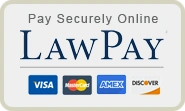It is difficult, if not impossible, to discharge student loans in bankruptcy cases – especially in Texas. However, many of our clients have insurmountable student loan debt. We therefore also advise our clients on the non-bankruptcy law remedies to discharge student loan debt.
If you work full-time for the government (federal, state, or local level) or a non-profit, you can qualify to have your student loans forgiven through the Public Service Loan Forgiveness Program (PSLF). In this program, you consolidate your loans into one Direct Loan and then your monthly payments on that consolidated loan are calculated by looking at your income, not calculated with the goal of repaying the loan in full. Many of our clients in this program qualify for the program and their monthly payments are zero. If you make 120 of these qualifying payments (which can be very small payments, even a monthly payment of zero), then the balance of the loan is forgiven after the 120th month has passed.
The Public Service Loan Forgiveness Program
The Public Service Loan Forgiveness Program was launched in October of 2007 to entice more college graduates to enter public service professions by providing that the monthly payments on their student loans would be dramatically reduced and, if they made 120 of these reduced payments, the balance of the borrower’s student loans would be forgiven. Normally, when debt is forgiven, that forgiveness results in income, and a 1099 is issued by the forgiving creditor and filed with the IRS. However, student loans forgiven through the Public Service Loan Forgiveness Program are not considered income and a 1099 will not be issued to the IRS when these loans are forgiven.
However, prior to 2021, borrowers working in the public or non-profit sector would believe that they were entitled to student loan forgiveness after 120 months, only to find that their applications for forgiveness were denied due to a technicality such as the rejection of all monthly payments that were made even one day late.
However, the Biden Administration has made changes to the Public Service Loan Forgiveness program and those changes have already provided relief to approximately 70,000 borrowers who were in the Public Service Loan Forgiveness Program. The Department of Education estimates that another half a million borrowers may benefit from these changes if they act quickly and process an application for this forgiveness before the October 31, 2022 deadline.
Who Is Eligible for Loan Forgiveness?
To be eligible for student loan forgiveness under the program, borrowers have to work in the public or non-profit sector. Jobs that can qualify include:
- Soldiers and other individuals working directly for the Department of Defense
- Individuals working for the Veterans= Affairs Department
- Teachers
- Nurses
- First responders
- Firefighters
- Local, city, county, and federal government workers
- Non-profit organization employees
The Public Service Loan Forgiveness Program was previously only available for borrowers with Direct Loans. However, the Biden Administration is currently offering a one-year waiver (set to expire after October 31, 2022) to include not only Direct Loans but also Federal Family Education Loans and Federal Perkins loans. Under the waiver program, the student loan borrower simply consolidates his/her loans into a Direct Loan and then applies for relief under the Public Service Loan Forgiveness Program.
Also, late payments and partial payments will now apply towards the 120 monthly payment goal under the Biden Administrations’ waiver policy. Additionally, even if you are not working for a qualifying employer at the time you apply for forgiveness, you can apply if you show that you made 120 payments while working for a qualified employer. Also, President Biden=s waiver really benefits teachers because they can now qualify for both the Teacher Loan Forgiveness program and the Public Service Loan Forgiveness program simultaneously.
Student Loan Payments During the Pandemic
In an effort to help financially distressed student loan borrowers during the Pandemic, President Biden has also extended the federal student loan payment pause until May 2022. This can benefit student loan borrowers. However, if they are employed in the public service or non-profit sector, they should apply for the Public Service Loan Forgiveness Program in order to start chipping away at the 120 payments rule. Months in which student loans are in deferment or forbearance do not count toward the Public Service Loan Forgiveness program.
Have Bankruptcy Questions? Contact Attorney Erin B. Shank Today
As many student loan borrowers have learned, receiving loan forgiveness is not always a straightforward process. Erin B. Shank can review your circumstances and determine if you qualify for this latest form of relief or if you would be able to unburden student loan debt or other debt by filing bankruptcy. Our law firm can guide you through the bankruptcy process from start to finish safely and virtually during the Pandemic without any in-person meetings. Let us help you get out of debt safely and conveniently. Get started now with a free virtual consultation.


